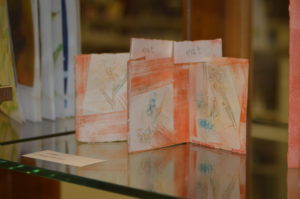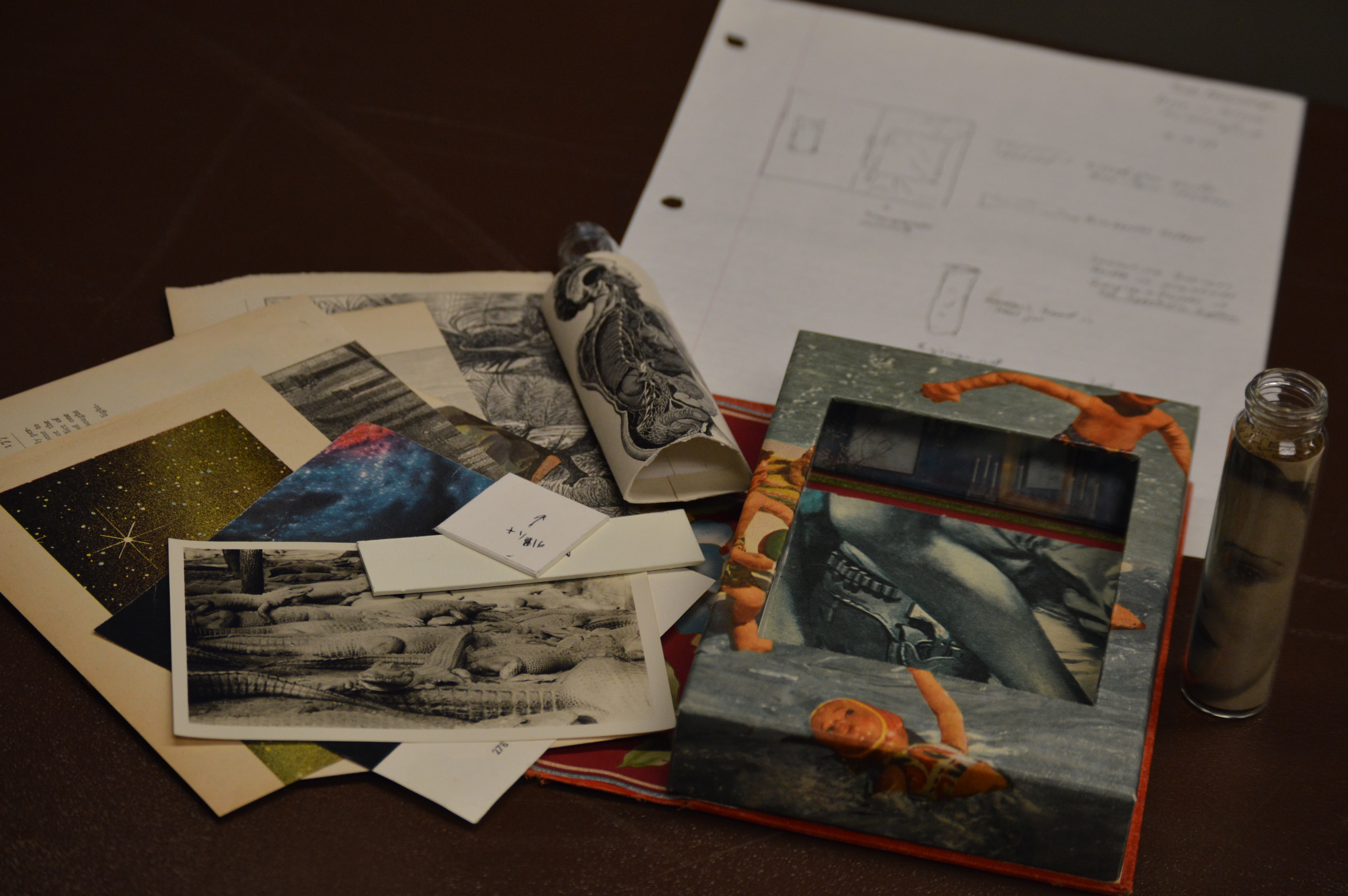By: Kate Rogers, Staff Writer
Thursday, Sept. 21 the Kate Cheney Chappell ‘83 Center for Book Arts held its first event at the Glickman Library. The lecture was by two Maine artists and USM alumni, Jill Osgood and Frank Turek.
The event opened with a short introduction by Rebecca Goodale. Goodale is the program organizer for the Book Arts Center, a USM faculty member and a well known Maine book artist. After reading a short biography on both artists, she gave up the stage for the first presenter, Jill Osgood.

Osgood was born in New Hampshire but grew up in Maine with a family of artists and “naturalists,” she said. Talking extensively of her love for nature and the Maine woods, she made it clear that both things heavily inspire all of her art.. In her art books, she creates an aesthetic that she calls the “fake nature, kitschy outdoorsy Maine thing.” Osgood uses organic material like black walnuts and lichen in her art, as well as paper and other supplies to invent “fake nature,” such as imitation birch bark.
During her time at USM, Osgood majored in painting. She never strayed from her passion for nature, saying that her paintings “were like walks in the woods.” An example of her work can be seen in one of the study rooms in the USM library at Gorham, where she painted the walls with a mural inspired by her actual walks through the woods behind the sports fields.
The next speaker was Frank Turek, who double majored in art and philosophy during his time at USM. He started by saying that he “feels like an interloper” because he does not consider his art book ‘art’ by standard definition. His art is, however, made from books and then put back into a form resembling a book. This was useful in showing that book arts is a wide and complex category of art.
Frank based his presentation on the importance of having, as he said, “a sense of wonder about the world.” His pieces are made to be interacted with and thought about. A goal he mentioned was “bringing the viewer close, closer than we normally look at artwork.” Lidded compartments, inset mirrors and elements of games are all things he uses to make the pieces interesting to explore. “Play,” he said, “is an important element of my work.”
Frank’s end goal was to engage the audience and get them to consider art more deeply than they otherwise might. Being a philosophy major, he is focused on thinking about art. This is why he themes his art around books and puts it in the form of a book. When talking about how the format assists with getting audiences to take their time with the art, he said, “Books allow us to sit with ourselves.”
When Frank finished speaking, Rebecca asked for questions, and the audience willingly continued the discussion about the artists’ work before dispersing. Kate Chappell was in attendance and was eager to talk of the history of the center and the presence of the book arts community at USM. Kate and Rebecca started the book arts program at USM in 2006 and launched the Center for Book Arts in 2008. Book arts combines aspects of sculpture, writing and painting and is, according to the overview on the USM website, “An art form that reaches back to medieval bookbinding and letterpress tradition and forward to installation art and novel constructions.”
There is a large book arts community in Portland. The Center for Book Arts often tries to bring those artists in to share, and there are many events planned for the rest of this school year. As Kate Chappell said, “There’s always something new around the corner with book arts.” The next lecture, on Oct. 20, is also at Glickman. More events and information about the program can be found on the USM website at usm.maine.edu/bookarts.

